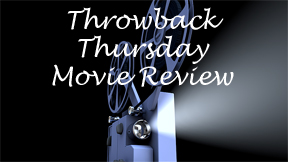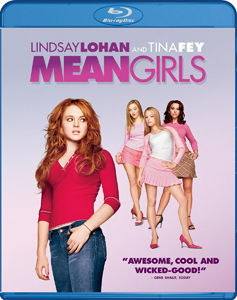“Mean Girls” (2004), both a time capsule of Lindsay Lohan at the height of her brief powers and one of the last good high school comedies from when teens listened to music on CDs, is a mix of sharp and flat notes. Remaking it – as will happen later this month – is unnecessary, as writer Tina Fey (working from a guidebook by Rosalind Wiseman) makes a thorough statement of how teen girls hurt each other as they backstab their way up the social ladder.
In “Mean Girls’ ” first half, Fey’s screenplay, the colorful school sets and the pitch-perfect turns by the four “Plastics” help the film overcome the fact that we’ve seen these beats before. Cady Heron’s (Lohan) conflict between the Plastics and the Mathletes, for example, was played out by “Freaks and Geeks’ ” Lindsay five years prior. “Being cool” versus “being yourself” transcends generations.
Perfect Plastics
Lohan, playing a girl who had grown up home-schooled in Africa, nails the sympathetic, confused and wry expressions as Cady observes absurd American teen behavior. The other three Plastics play it broadly: Rachel McAdams is queen bee Regina, Lacey Chabert’s Gretchen aims to please Regina at all costs, and Amanda Seyfried’s Karen is one of those types who is too dim-witted to ever not be happy.

“Mean Girls” (2004)
Director: Mark Waters
Writers: Tina Fey (screenplay), Rosalind Wiseman (book)
Stars: Lindsay Lohan, Rachel McAdams, Lacey Chabert
With a tinge of “Clueless” via Cady’s narration, “Mean Girls” slathers on deadpan and absurdist humor, and lands most of it. Cady’s new best friend Janis Ian (Lizzy Caplan) calls Cady “Caddie” even though it’s pronounced “Katie.” A character is named Gretchen Wieners. Caplan’s character is literally named Janis Ian, and the real Janis Ian’s “Seventeen” plays at one point behind a scene that doesn’t deserve it.
It’s all winking enough that I believe it’s on purpose. Also providing momentum are mysteries about the relationships before Cady arrived at the suburban Chicago school. Why does Janis hate Regina so much, and vice versa? As it turns out, it’s because Regina feared Janis was a lesbian and therefore didn’t invite her to a pool party when they were younger.
“Mean Girls” arrived at an odd point in time when Janis being a lesbian (or not) factors into her social capital, and Janis’ bestie Damian (Daniel Franzese) is also an outcast for being gay. (Like Rickie from “My So-Called Life,” he’s a regular presence with Janis and Cady in the girls’ bathroom, without much comment.)
Tail end of the un-P.C. era
Also, characters say “retarded” a lot, as this was slightly before that term was banned by the P.C. police. (Also check out “Gilmore Girls” episodes from this time if you’ve forgotten how far “retarded” and “gay” – as an insult – lingered into the 21st century.) And “Mean Girls” is totally comfortable having a chuckle about Vietnamese girls being rivals for the affections of the gym teacher.

The film’s first half is timelessly funny. Then at about the halfway mark, it becomes clear that Fey is indeed adapting a nonfiction book by Wiseman that aims to help teen girls navigate being around, well, other teen girls.
Fey and helmer Mark Waters (who also directed Lohan in “Freaky Friday,” another of her stronger pictures) shoehorn a throughline into “Mean Girls” so it doesn’t play like a succession of skits. Regina has a scrapbook of backstabbing wherein she and the other Plastics make fun of their female classmates.
When the Burn Book’s photocopied pages get splattered around the school like Kathryn’s journal in “Cruel Intentions,” the “girls go wild” (one of the film’s few dated references) in the halls in a shift to over-the-top absurdism. This leads to an impromptu assembly and workshop by Fey (as a teacher) where everyone realizes they’ve been committing “girl-on-girl crimes” and should consider stopping.
While there are attempts to inject wry humor into the second half – Tim Meadows is amusing as a carpal-tunnel-afflicted teacher blatantly smitten with Fey – for too long the film turns into a wannabe edgy-funny take on an Afterschool Special. The pacing slows and the tone becomes uneven, flirting with “Drop Dead Gorgeous” and “Election” territory via gags about students being hit by buses.
Skits outshine the theme
As it proceeds through genre beats like the crowning of king and queen at the spring dance, “Mean Girls” isn’t as funny as it was nor as profound as it wants to be. I felt in 2004 that the film was after its time, riffing on Nineties teen comedies (which themselves riffed on Eighties teen comedies) but struggling to be different or better.
The actresses are great, but their character arcs get lost because their best moments are in skits and gags. Cady “learns” the “stop backstabbing” lesson, but she does the least backstabbing of anyone. She always knows backstabbing is wrong.
If “Mean Girls” has earned its classic status, it’s through the humorously/awkwardly sexy “Jingle Bell Rock” and Gretchen trying to make “fetch” happen. (I kind of wish “fetch” had happened. Ironically, it only happened inasmuch as people know the quote about how it’s not gonna happen.)
“Mean Girls” isn’t as fetch as the Nineties gems before it or the Apatow classics after it. But it’s poignant to remember a time when Lohan was gonna be a sure-fire star, and while the “girl-on-girl crime” theme is starkly presented, it’s not wrong.
Twenty years later, “Mean Girls” – which spawned a sequel in 2011 and a musical in 2017 — looks darn good compared to what the genre is giving us now. Judging by its trailer, the remake (Jan. 17) might achieve a one-two punch of being too similar to the original while also being worse.

